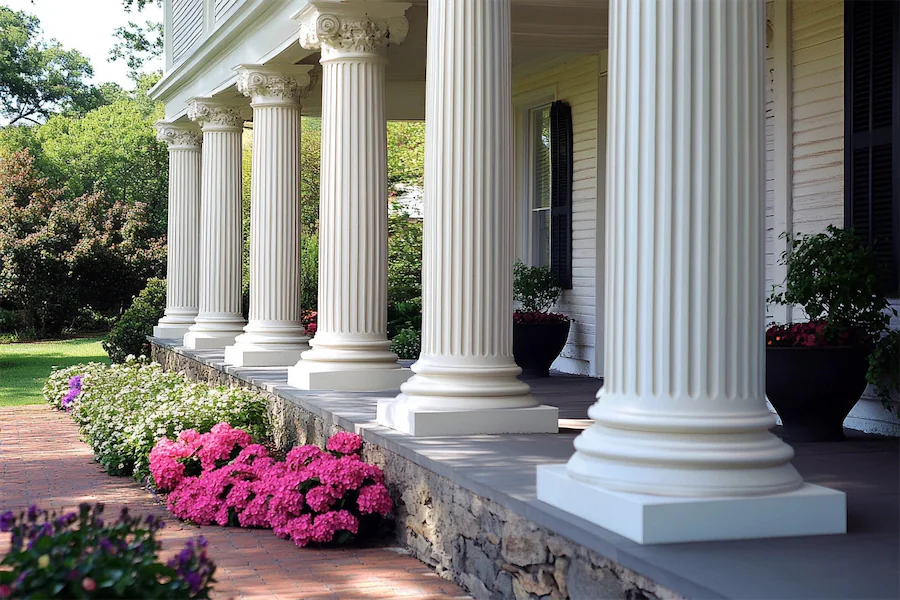Dutch Colonial architecture, originating in the early 17th century, is renowned for its distinctive gambrel roofs and symmetrical facades. A notable feature of this style is the use of columns, which not only provide structural support but also enhance the aesthetic appeal of the buildings.
History and Origins of Dutch Colonial Columns
The Dutch settlers in America brought with them architectural styles from the Netherlands, adapting them to the new environment. In the Dutch East Indies, the Indies Empire style emerged, characterized by symmetrical layouts, high ceilings, and front and rear galleries flanked with Greek columns. These adaptations were made to improve cross ventilation and protect from the tropical climate.
Key Features of Dutch Colonial Columns
Dutch Colonial columns are typically simple and functional, reflecting the practical nature of the settlers. Key features include:
- Material: Wood was commonly used due to its availability and ease of workmanship.
- Design: Columns often exhibit classical influences, such as Doric or Ionic styles, but are generally less ornate than those found in other colonial architectures.
- Placement: Columns are frequently found supporting expansive verandas or porches, contributing to the symmetrical and balanced appearance of the facade.
Applications of Dutch Colonial Columns
In Dutch Colonial architecture, columns serve both structural and decorative purposes:
- Structural Support: They uphold overhanging roofs or balconies, ensuring stability and durability.
- Aesthetic Appeal: Columns add to the visual harmony of the building, often framing entrances and supporting porches that provide outdoor living spaces.
Considerations When Choosing Dutch Colonial Columns
When selecting or restoring Dutch Colonial columns, consider the following:
- Material Authenticity: Using traditional materials like wood can preserve the historical integrity of the structure.
- Design Consistency: Maintaining the simplicity and classical proportions characteristic of Dutch Colonial columns is essential for architectural coherence.
- Climate Adaptation: In tropical regions, incorporating features like wide verandas supported by columns can enhance ventilation and comfort, as seen in the Indies Empire style.
Conclusion
Dutch Colonial columns are integral to the charm and functionality of Dutch Colonial architecture. Their straightforward design and structural purpose reflect a harmonious blend of form and function. Whether preserving a historic building or constructing a new one inspired by this style, attention to the design and placement of columns is crucial in maintaining the architectural integrity of Dutch Colonial design.
